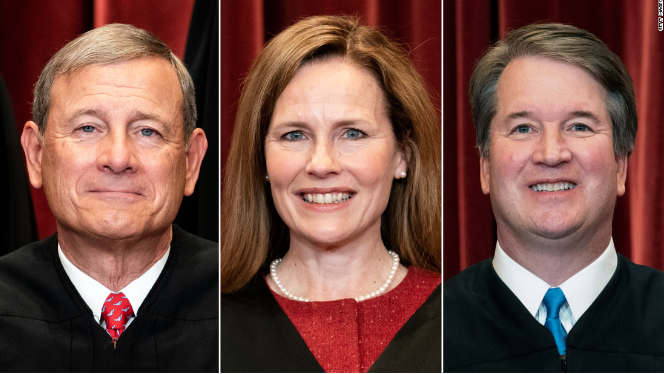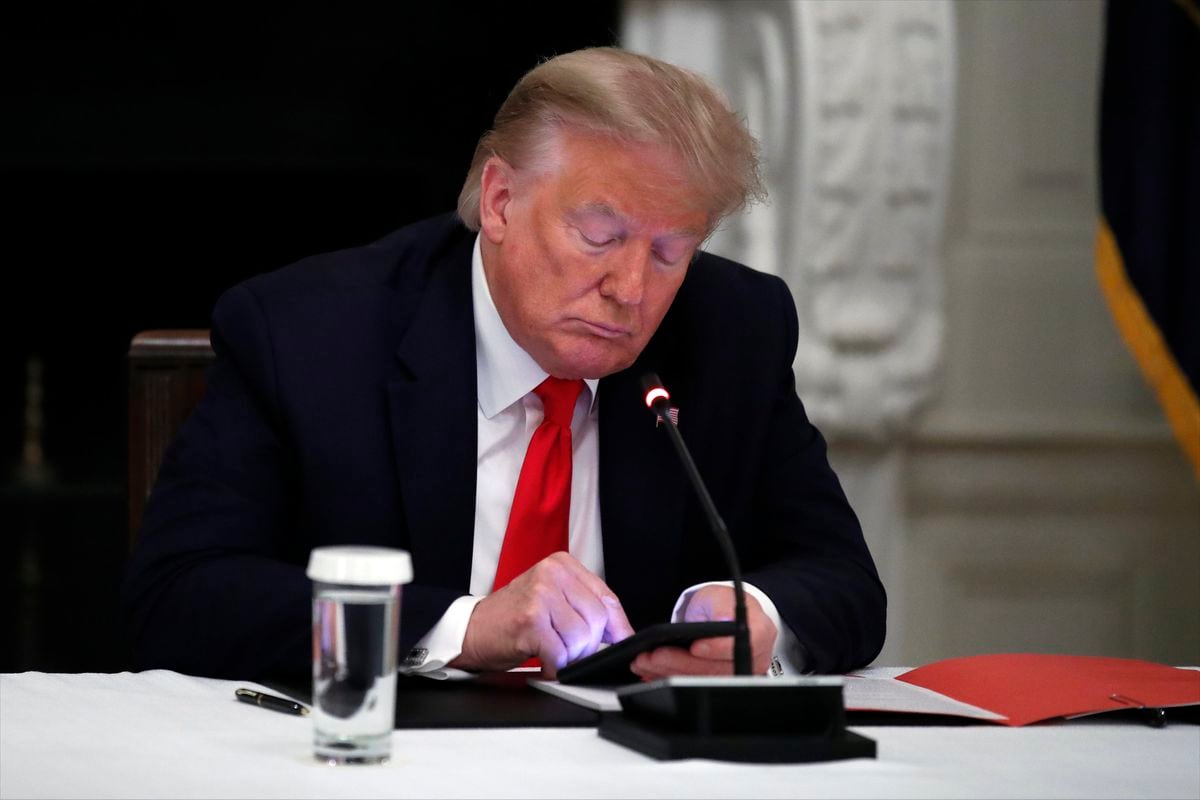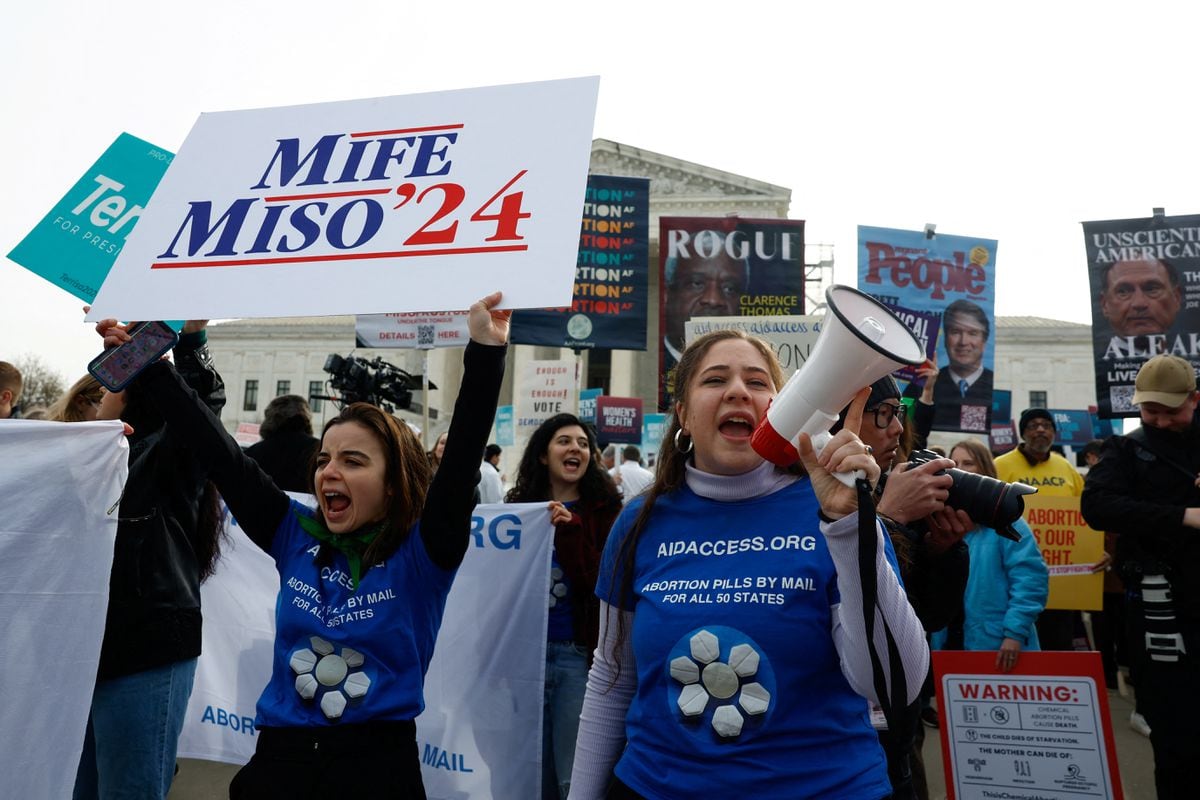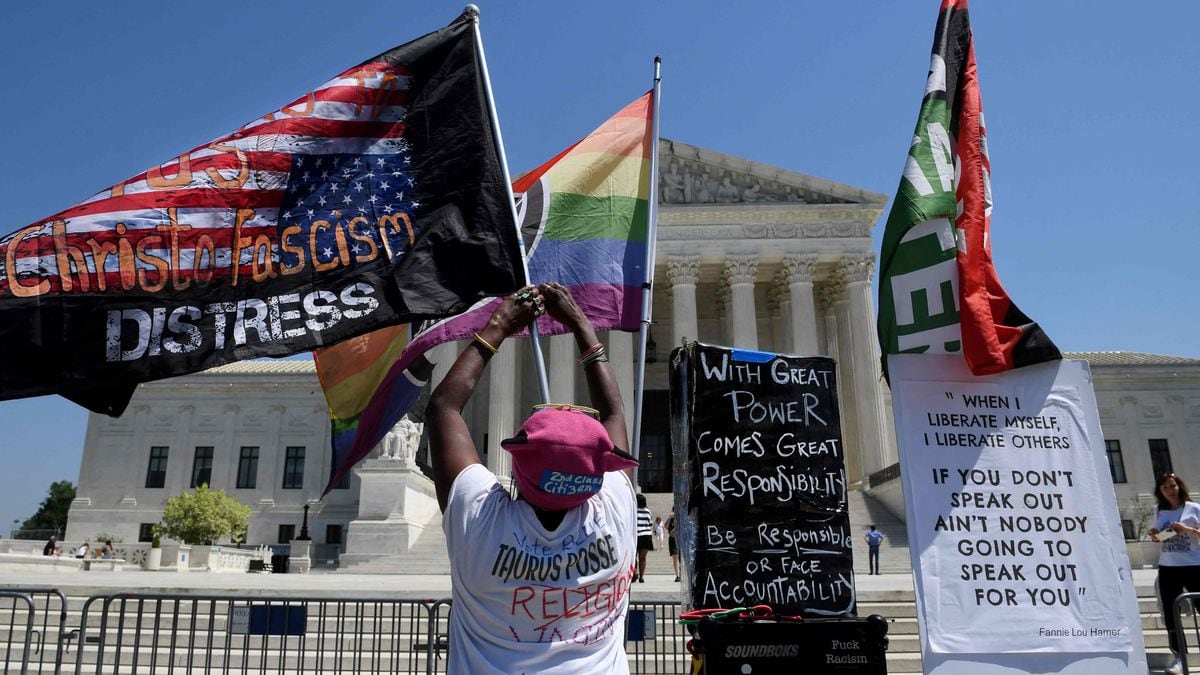How to understand the ideological balance in the United States Supreme Court 2:53
(CNN) -
Chief Justice John Roberts, along with Justices Amy Coney Barrett and Brett Kavanaugh, demonstrated their collective power in America's highest court on Thursday.
They pushed for Supreme Court views on Obamacare and religious freedom, in an action that marks a turning point for the conservative-dominated bank.
In addition, it adds to the suspense of the next two weeks as the court finishes its annual term.
A central question in the session that began last October was whether Roberts would still exercise meaningful control, after former President Donald Trump appointed Barrett to succeed the late Liberal Justice Ruth Bader Ginsburg and created a 6- liberal conservative bench. 3.
10 years after Obamacare, these are your 1:11 numbers
The latest developments suggest a possible 3-3-3 pattern, with Roberts, Barrett and Kavanaugh in the center-right, putting a brake on their more conservative brothers who regularly push to knock down precedents.
The trio were among the majorities that rejected another challenge to the Affordable Care Act of 2010 and took only a small step, above complaints from other conservatives, in favor of religious entities that would discriminate against LGBTQ people.
advertising
The new movements in the Court
On Thursday, Justices Samuel Alito, Clarence Thomas, and Neil Gorsuch, in the Philadelphia case, advocated for reconsideration of a 1990 Supreme Court case. It aimed to make it easier for religious believers to obtain exemptions from the injunctions against the discrimination and other government regulations.
Supreme Court will not review the $ 2 billion verdict against Johnson & # 038;
Johnson in case of cancer in his talc
The three remaining Liberals are Justices Stephen Breyer, Sonia Sotomayor, and Elena Kagan.
They fully joined Roberts's opinion on the Philadelphia conflict between free exercise rights and LGBTQ interests.
That was probably due to how little the case was opened.
Roberts' narrow opinion was tied to the specifics of Philadelphia's nondiscrimination rules and the contract with Catholic Social Services.
Decisions in future cases may not be as limited.
Fifteen more cases await rulings, including a momentous controversy over voting rights.
In addition, more evidence of the 'Roberts Court' patterns will emerge.
The dispute over Arizona's voting rights law and California's separate cases (one involving union organizers, the other disclosure rules for charitable donations) is more likely to provoke the conservative leanings of the majority.
Roberts concern
Chief Justice Roberts, appointed in 2005 by President George W. Bush, has shown concern for the Supreme Court's institutional reputation and his own legacy.
He has sought moderate decisions in many areas of the law to try to curb the momentum of the right-wing majority.
Roberts had argued in public speeches that the political alignments of justices do not necessarily dictate how they would govern.
Perhaps demonstrating that, he occasionally joined Democratic-appointed liberals in decisions.
The most sensational was in 2012, when the court first upheld the Affordable Care Act by 5-4 votes.
Supreme Court blocks controversial abortion law 1:27
Roberts' vote to preserve the law in that first challenge drew the ire of his fellow Conservatives on the bench.
Also, out-of-court Republicans who had fought the Affordable Care Act (ACA) since its inception.
But his action in 2012 and then again in a 2015 case, similarly defending the law that is known as Obamacare, did much to shape the public perception of the Chief Justice as a moderate jurist.
What the Court's ruling on the ACA shows
The ACA case on Thursday was a coup of greater restraint and unity despite ideological differences.
The majority of seven judges flatly rejected the case.
It was based on the fact that the challengers led by the Republican Party had not suffered any damage that could be repaired.
The case focused on the ACA's individual insurance mandate.
In 2017, Congress reduced the tax penalty to zero and the provision has no means to enforce it.
The legal basis for dismissing the case, the lack of legal "standing," played on conservative wishes to keep judges out of political disputes.
Neither Barrett nor Kavanaugh wrote separate statements about the case.
But Thomas, who had dissented in the two previous ACA disputes but this time rejected the assertions of the challengers, said for himself: “There is a fundamental problem with the argument presented by the plaintiffs in attacking the Act: they have not identified any illicit action that has harmed them ”.
Chief Justice John Roberts, along with Justices Amy Coney Barrett and Brett Kavanaugh.
The change in Roberts' strategy
Roberts did not keep this Obamacare decision to himself, as he did the previous two, but instead assigned it to Breyer, the high-ranking liberal who is the subject of constant speculation about retirement.
Breyer emphasized in his opinion to the Court that the 18 Republican-led states and two individuals who sued could not show any harm.
"The issue is not simply technical," Breyer wrote.
"Being here to attack an inapplicable legal provision would allow a federal court to render what would amount to an advisory opinion without the possibility of any judicial redress."
Justices Alito and Gorsuch disagreed, alleging that the ACA had imposed specific financial burdens on states and reliving past grievances.
“Today's Decision is the third installment in our epic ACA trilogy and follows the same pattern as installments one and two.
In all three episodes, with the Affordable Care Act facing serious threat, the Court has made an unlikely bailout, ”they stated.
Alito, Gorsuch and Thomas disagree on the religious freedom case
In the Philadelphia foster care case, Thomas joined Alito and Gorsuch and his anger at the majority's dovish approach was even more palpable.
They agreed with the final judgment of the majority of Roberts against Philadelphia.
The city had frozen a foster care contract with Catholic Social Services because, based on its religious beliefs, it would not certify that same-sex couples are foster parents.
But the three conservatives disagreed with Roberts' narrow legal reasoning.
Roberts' opinion, along with Barrett, Kavanaugh, was tied to the terms of the Philadelphia contract.
Roberts also noted that other private parenting agencies in Philadelphia certify same-sex couples.
Alito's statement, along with Thomas and Gorsuch, was unusually long, 77 pages long.
"After receiving more than 2,500 pages of information and after more than half a year of post-discussion reflection, the Court has issued a wisp of decision that leaves religious freedom in a confused and vulnerable state."
They argued that the judges should have reconsidered a 1990 decision that allowed the generally applicable laws to be upheld.
Even if they affected religious practices, if the government had a rational reason for the regulations.
Judge Barrett, along with Judges Kavanaugh and Breyer, said there was no need to review that decision, because the Philadelphia regulation was not generally enforced and it already had to meet stricter constitutional scrutiny.
"We don't need to grapple with" broader issues of religious freedom for now, Barrett wrote, perhaps taking a page from the boss.
Amy Coney Barrett United States Supreme Court John Roberts









/cloudfront-eu-central-1.images.arcpublishing.com/prisa/OV2VBR4SENF6HBYT4PL7REJMVU.jpg)